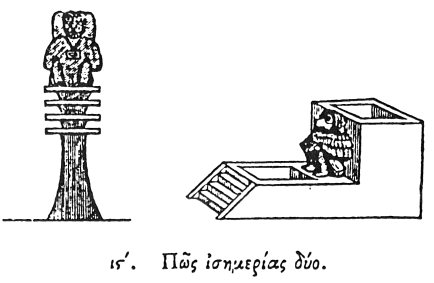
Masonic, Occult and Esoteric Online Library
The Hieroglyphics of Horapollo
By
How the Two Equinoxes

Again, to signify the two Equinoxes they depict a sitting CYNOCEPHALUS, for at the two equinoxes of the year it makes water twelve times in the day, once in each hour, and it does the same also during the two nights; wherefore not without reason do the Egyptians sculpture a sitting Cynocephalus on their Hydrologia (or waterclocks); and they cause the water to run from its member, because, as I said before, the animal thus indicates the twelve hours of the equinox. And lest the contrivance, by which the water is discharged into the Horologium, should be too wide, or on the other hand too narrow, (for against both these caution must be taken, for the one that is too wide, by discharging the water quickly, does not accurately fulfil the measurement of the hour, neither the one that is too narrow, since it lets forth the water little by little, and too slowly,) they perforate an aperture to the extremity of the member, and according to its thickness insert in it an iron tube adapted to the circumstances required. And this they are pleased to do, not without sufficient reason, more than in other cases. They also use this symbol, because it is the only animal that at the equinoxes utters its cries twelve times in the day, once in each hour.
Footnotes
I. The Cynocephalus upon the Nilometer, from the ceiling of the Ramesseion, where it occupies the central position between the last and first months of the year.
II. A water-clock in the Museum at Leyden.—Leemans.
